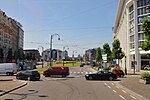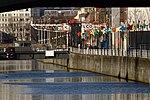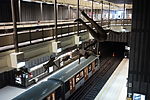MigratieMuseumMigration

The MigratieMuseumMigration (MMM) is a Belgian migration museum at Rue des Ateliers/Werkhuizenstraat 17 in Molenbeek, in the Brussels-Capital Region, which opened in October 2019. It is one of the 235 (as of 2024) museums to which access is provided by the Belgian national "Museum Pass" and one of the 49 (as of 2024) museums included in the "Brussels Card".The museum was founded in 2019 by the Foyer de Molenbeek-Saint Jean, which had been established in 1969.People from about 180 countries live in the capital region of Brussels, and the museum presents the history of the first guest workers, the homeless, the war refugees and also the European internal migrants. The museum "pays tribute to the many migrants who have helped shape the city".
Excerpt from the Wikipedia article MigratieMuseumMigration (License: CC BY-SA 3.0, Authors, Images).MigratieMuseumMigration
Rue des Ateliers - Werkhuizenstraat,
Geographical coordinates (GPS) Address External links Nearby Places Show on map
Geographical coordinates (GPS)
| Latitude | Longitude |
|---|---|
| N 50.857588888889 ° | E 4.3437194444444 ° |
Address
MigratieMuseumMigration
Rue des Ateliers - Werkhuizenstraat
1080
Belgium
Open on Google Maps











